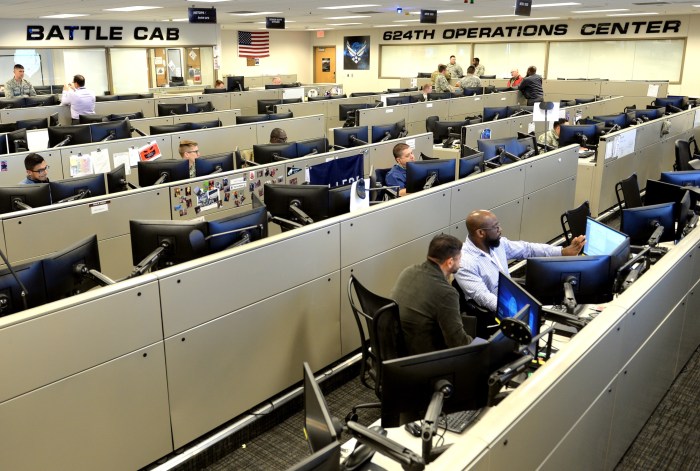Joint force commanders must perform an analysis of the adversary to gain a comprehensive understanding of their capabilities, vulnerabilities, and intentions. This analysis is essential for developing effective strategies and tactics to counter the adversary and achieve mission success.
The adversary analysis framework provides a structured approach for conducting this analysis. It includes key components such as understanding the adversary’s capabilities, vulnerabilities, and intentions. This framework can be applied in real-world scenarios to assess the adversary’s strengths and weaknesses and develop appropriate countermeasures.
Adversary Analysis Framework

An adversary analysis framework provides a structured approach to understanding and assessing an adversary’s capabilities, vulnerabilities, and intentions. It enables joint force commanders to develop effective strategies and tactics to counter adversary threats.
Key Components
- Adversary Profile: A detailed description of the adversary’s characteristics, including its history, organization, leadership, ideology, and resources.
- Capabilities Assessment: An evaluation of the adversary’s military capabilities, including its weapons systems, personnel, and training.
- Vulnerability Assessment: An analysis of the adversary’s weaknesses and vulnerabilities, including its operational weaknesses, technical vulnerabilities, and human vulnerabilities.
- Intentions Assessment: An assessment of the adversary’s goals and objectives, including its military objectives, political objectives, and ideological objectives.
Importance
Understanding the adversary’s capabilities, vulnerabilities, and intentions is critical for developing effective strategies and tactics to counter adversary threats. By conducting a comprehensive adversary analysis, joint force commanders can gain a competitive advantage and increase the likelihood of mission success.
Methods for Adversary Analysis

There are a variety of methods for conducting adversary analysis, each with its own strengths and weaknesses. The most common methods include:
Intelligence Gathering
Intelligence gathering is the process of collecting and analyzing information about the adversary. Sources of intelligence include human intelligence (HUMINT), signals intelligence (SIGINT), and open-source intelligence (OSINT).
Threat Assessment
Threat assessment is the process of evaluating the potential threats posed by the adversary. Threats can be kinetic (e.g., military attacks), cyber (e.g., cyber attacks), or informational (e.g., propaganda).
Vulnerability Assessment
Vulnerability assessment is the process of identifying and assessing the adversary’s weaknesses and vulnerabilities. Vulnerabilities can be technical (e.g., software vulnerabilities), operational (e.g., poor leadership), or human (e.g., lack of training).
Selecting the Appropriate Method
The appropriate method for conducting adversary analysis will depend on the specific situation. Factors to consider include the availability of intelligence, the level of threat posed by the adversary, and the resources available for conducting the analysis.
Intelligence Gathering

Intelligence gathering is a critical part of adversary analysis. It provides the information needed to understand the adversary’s capabilities, vulnerabilities, and intentions.
Sources of Intelligence
- Human Intelligence (HUMINT): Information collected from human sources, such as spies, informants, and defectors.
- Signals Intelligence (SIGINT): Information collected from electronic signals, such as radio transmissions, telephone calls, and computer networks.
- Open-Source Intelligence (OSINT): Information collected from publicly available sources, such as newspapers, magazines, and websites.
Tips for Effective Intelligence Gathering
- Identify the information you need to collect.
- Use a variety of sources to collect information.
- Evaluate the reliability of the information you collect.
- Protect the sources of your information.
Threat Assessment

Threat assessment is the process of evaluating the potential threats posed by the adversary. Threats can be kinetic (e.g., military attacks), cyber (e.g., cyber attacks), or informational (e.g., propaganda).
Types of Threats
- Kinetic Threats: Threats that involve the use of physical force, such as military attacks or terrorist attacks.
- Cyber Threats: Threats that involve the use of computers and networks to disrupt or damage systems or data.
- Informational Threats: Threats that involve the use of information to manipulate or deceive people.
Conducting a Comprehensive Threat Assessment
- Identify the potential threats posed by the adversary.
- Assess the likelihood of each threat occurring.
- Assess the potential impact of each threat.
- Develop strategies to mitigate the threats.
Vulnerability Assessment: Joint Force Commanders Must Perform An Analysis Of The Adversary
Vulnerability assessment is the process of identifying and assessing the adversary’s weaknesses and vulnerabilities. Vulnerabilities can be technical (e.g., software vulnerabilities), operational (e.g., poor leadership), or human (e.g., lack of training).
Types of Vulnerabilities, Joint force commanders must perform an analysis of the adversary
- Technical Vulnerabilities: Vulnerabilities that exist in the adversary’s systems or equipment.
- Operational Vulnerabilities: Vulnerabilities that exist in the adversary’s procedures or practices.
- Human Vulnerabilities: Vulnerabilities that exist in the adversary’s personnel.
Conducting a Thorough Vulnerability Assessment
- Identify the potential vulnerabilities of the adversary.
- Assess the severity of each vulnerability.
- Develop strategies to exploit the vulnerabilities.
Reporting and Communication
Effective reporting and communication are essential for adversary analysis. Joint force commanders need to be able to communicate the results of their analysis to decision-makers in a clear and concise manner.
Types of Reports
- Intelligence Reports: Reports that provide information about the adversary’s capabilities, vulnerabilities, and intentions.
- Threat Assessments: Reports that assess the potential threats posed by the adversary.
- Vulnerability Assessments: Reports that identify and assess the adversary’s weaknesses and vulnerabilities.
Communicating the Results of Adversary Analysis
- Use clear and concise language.
- Provide evidence to support your findings.
- Tailor your report to the audience.
- Be prepared to answer questions.
Essential Questionnaire
What are the key components of an adversary analysis framework?
The key components of an adversary analysis framework include understanding the adversary’s capabilities, vulnerabilities, and intentions.
What are the different methods for conducting adversary analysis?
The different methods for conducting adversary analysis include intelligence gathering, threat assessment, and vulnerability assessment.
What is the importance of intelligence gathering in adversary analysis?
Intelligence gathering is important in adversary analysis because it provides information about the adversary’s capabilities, vulnerabilities, and intentions.